DeWalt DW432 Handleiding
DeWalt
Schuurmachine
DW432
Bekijk gratis de handleiding van DeWalt DW432 (6 pagina’s), behorend tot de categorie Schuurmachine. Deze gids werd als nuttig beoordeeld door 89 mensen en kreeg gemiddeld 3.6 sterren uit 45 reviews. Heb je een vraag over DeWalt DW432 of wil je andere gebruikers van dit product iets vragen? Stel een vraag
Pagina 1/6

INSTRUCTION MANUAL
GUIDE D'UTILISATION
MANUAL DE INSTRUCCIONES
DW432 3"x 21" Belt Sander
DW433 3"x 21" Variable Speed Belt Sander
DW432 Ponceuse à courroie (7,6 x 53,3 cm ou 3 x 21 po)
DW433 Ponceuse à courroie à vitesse variable (7,6 x 53,3 cm ou 3 po x 21 po)
DW432 3" x 21" Lijadora de correa
DW433 3" x 21" Lijadora de correa de velocidad variable
ADVERTENCIA:
1-800-4-DEWALT (1-800-433-9258)
SAVE THESE INSTRUCTIONS
WARNING! Read and understand all instructions including that
provided with attachment and accessories.
GENERAL SAFETY INSTRUCTIONS
WORK AREA
Keep your work area clean and well lit.
Do not operate power tools in explosive atmospheres, such as in the presence of flam-
mable liquids, gases, or dust.
Keep bystanders, children, and visitors away while operating a power tool.
ELECTRICAL SAFETY
Grounded tools must be plugged into an outlet properly installed and grounded in
accordance with all codes and ordinances. Never remove the grounding prong or
modify the plug in any way. Do not use any adaptor plugs.
Double insulated tools are equipped with a polarized plug (one blade is wider than the
other.) This plug will fit in a polarized outlet only one way. If the plug does not fit fully
in the outlet, reverse the plug. If it still does not fit, contact a qualified electrician to
install a polarized outlet. Do not change the plug in any way.
Avoid body contact with grounded surfaces such as pipes, radiators, ranges and
refrigerators.
Don’t expose power tools to rain or wet conditions.
Do not abuse the cord. Never use the cord to carry the tools or pull the plug from an
outlet. Keep cord away from heat, oil, sharp edges or moving parts. Replace damaged
cords immediately.
When operating a power tool outside, use an outdoor extension cord marked “W-A”
or “W.”
Minimum Gage for Cord Sets
Volts Total Length of Cord in Feet
Ampere Rating
PERSONAL SAFETY
Stay alert, watch what you are doing and use common sense when operating a power
tool. Do not use tool while tired or under the influence of drugs, alcohol, or medica-
tion.
Dress properly. Do not wear loose clothing or jewelry. Contain long hair. Keep your hair,
clothing, and gloves away from moving parts.
• Avoid accidental starting. Be sure switch is off before plugging in.
Remove adjusting keys or wrenches before turning the tool on.
Do not overreach. Keep proper footing and balance at all times.
Use safety equipment. Always wear eye protection.
TOOL USE AND CARE
Use clamps or other practical way to secure and support the workpiece to a stable
platform.
Do not force tool. Use the correct tool for your application.
Do not use tool if switch does not turn it on or off.
Disconnect the plug from the power source before making any adjustments, changing
accessories, or storing the tool.
Store idle tools out of reach of children and other untrained persons.
Maintain tools with care. Keep cutting tools sharp and clean.
Check for misalignment or binding of moving parts, breakage of parts, and any other
condition that may affect the tool’s operation.
Use only accessories that are recommended by the manufacturer for your model.
SERVICE
Tool service must be performed only by qualified repair personnel.
When servicing a tool, use only identical replacement parts. Follow instructions in
the Maintenance section of this manual.
ADDITIONAL SPECIFIC SAFETY INSTRUCTIONS FOR
BELT SANDERS
Hold tool by insulated gripping surfaces when performing an operation where the cut-
ting tool may contact hidden wiring or its own cord.
Do not sand metal of any kind with your belt sander.
Do not wet sand with this sander.
Empty dust bag frequently.
Do not operate this tool for long periods of time.
Clean out your tool often, especially after heavy use.
CAUTION: Wear appropriate personal hearing protection during use.
WARNING:
Avoid prolonged contact with dust from power sanding, sawing, grinding, drilling, and
other construction activities. Wear protective clothing and wash exposed areas with
soap and water.
CAUTION:
Precautions To Take When Sanding Paint
PERSONAL SAFETY
ENVIRONMENTAL SAFETY
CLEANING AND DISPOSAL
If you have questions or comments, contact us.
Pour toute question ou tout commentaire, nous contacter.
Si tiene dudas o comentarios, contáctenos.
1-800-4-DEWALT • www.dewalt.com

ASSEMBLY
Replacing the Sanding Belt
WARNING: BE SURE SANDER IS TURNED OFF AND DISCONNECTED FROM THE
POWER SUPPLY WHEN CHANGING THE SANDING BELT. BEFORE RECONNECTING
THE TOOL, DEPRESS AND RELEASE THE TRIGGER SWITCH TO ENSURE THAT THE
TOOL IS OFF.
TO REMOVE SANDING BELT (FIG. 2)
1. Rotate the belt release lever (A) up until the top front wheel of the sander retracts releasing
the tension on the abrasive belt.
2. Set the sander on its side so all three wheels are visible.
3. Remove the worn out belt.
TO INSTALL SANDING BELT
1. Slip a new belt around the wheels. Arrows printed on the inside of the belt point in the direc-
tion in which the wheels turn. Orient the belt in the direction of wheel rotation. Be sure the
belt does not go over the tracking flange (B) located on the inside of the top, front wheel as
shown in Figure 3.
2. Rotate the belt release lever (A) down into position to reapply tension to the belt.
NOTE: Some sanding belts are multi-directional and do not have arrows. The direction of rota-
tion is also indicated on the brush cover (C) in Figure 1.
MOTOR
Your D WALT tool is powered by a D WALT-built motor. Be sure your power supply agreesE E
with the nameplate marking. Volts 50/60 Hz or “AC only” means your tool must be operated
only with alternating current and never with direct current. Voltage decrease of more than
10% will cause loss of power and overheating. All DEWALT tools are factory tested, if this
tool does not operate, check the power supply.
OPERATION
Switch Operation
To start the belt sander, depress the trigger switch (D). Allow the belt sander to reach oper-
ating speed before touching the work surface.
To slow or stop the belt sander, release the trigger switch.
For continuous operation, press in the lock button (E) while the trigger switch is depressed
and the belt sander is running (Fig. 2).
To release from continuous operation, squeeze the trigger and the lock will disengage.
WARNING: BE SURE THE LOCK BUTTON IS NOT DEPRESSED BY CYCLING THE
SWITCH SEVERAL TIMES OR BY DEPRESSING AND RELEASING THE SWITCH
SEVERAL TIMES BEFORE PLUGGING IN YOUR BELT SANDER! DAMAGE TO YOUR
TOOL OR PERSONAL INJURY MAY RESULT.
Variable Speed (DW433 ONLY)
The speed control dial, located on the back of the rear handle, moves the speed of the sanding
belt from approximately 850 surface feet per minute on speed #1 (light sanding; fine grit sand-
ing belts) to approximately 1400 surface feet per minute on speed #6 (more aggressive sand-
ing; coarse sanding belts). Low speeds also prevent excessive belt wear and overheating when
removing paint with the belt sander.
Front Handle
There are two positions for the front handle: top position and front position. The unit comes with
the handle installed in the top position (F) as shown in Figure 1.
TO POSITION THE HANDLE
1. Loosen the screw in the center of the handle using a Phillips screwdriver.
2. Attach the handle to the threaded hole in the front (G) or the top (F) of the unit.
3. Tighten the screw.
NOTE: The handle must be properly seated over the mounting surface before tightening the
screw.
Tracking the Belt
Your belt sander is equipped with an automatic tracking system that prevents the belt from
moving into the housing while the sander is operating. The automatic tracking system prevents
damage to the sander housing and the destruction of the sanding belt.
TO PROPERLY TRACK THE SANDING BELT (FIG. 2)
1. Grasp the rear handle (H) of the unit firmly and flip the sander so that the belt is facing the
operator.
2. Depress the trigger (D) to begin rotation of the belt.
3. Turn the tracking knob (I) counterclockwise to move the belt toward the housing. Turn the
knob clockwise to move it away from the housing.
NOTE: The belt should be aligned with the flush edge of the platen (J) while the sander is in oper-
ation (Fig. 4).
4. Release the trigger and make sure the belt has come to a complete stop before setting the
unit down.
Proper Hand Position
Safe belt sanding is a two-handed operation. One hand is used to grip the rear handle of the unit
while the other hand is used to grip the front handle as seen in Figure 4.
Dust Collection System
WARNING: Turn off and unplug sander before making any adjustments or removing or
installing accessories. Before reconnecting the tool, depress and release the trigger switch to
ensure that the tool is off.
TO ATTACH THE DUST COLLECTOR (FIG. 5)
1. Pull the locking dust chute collar (K) up.
2. Insert the rubber dust ejection chute into the collar. Make sure the slots on the collar are
aligned with the nubs (L) on the ejection chute.
3. Push the dust collector from the rear of the bag until the ejection chute snaps into the dust
chute collar and the locks onto the belt cover (M).
4. Push the locking dust chute collar down to secure the dust collector to the unit.
TO EMPTY THE DUST COLLECTOR
1. Pull up on the locking dust chute collar.
2. Remove the dust collector, the rubber ejection chute, and dust collector from the unit
together.
3. Once the dust collector is disconnected from the unit, release the dust seal latch (N) on the
underside of the collector (Fig. 6).
4. Squeeze the dust chute in the spaces indicated (O) to release the collector.
5. Pull the dust bag up to release it from the chute.
6. Slide the dust collector off of the rubber dust ejection chute.
7. Shake the bag and ejection chute over a trash can, tapping the bag lightly against the can
to loosen any compacted dust particles.
8. When the dust collector is empty, reattach it to the dust ejection chute and then to the
sander.
DUST COLLECTION SHUT-OFF VALVE (FIG. 2)
When sanding in tight places, the dust collector may be removed.
CAUTION: With the dust collector removed, the stream of dust will be blown through the
exhaust port toward the operator unless the dust collection valve is closed.
To close the dust collection valve, push the lever (P) forward. This will prevent the flow of
dust from the exhaust port.
To open the dust collection valve, pull the lever (P) backward. This will allow the flow of dust
to exit the exhaust port.
ACCESSORIES
Two accessories are offered for DEWALT belt sanders, DW432, DW433, at extra cost from your
local service center. They are the DW4050-Vacuum Adaper and DW4055-Integrated Sanding
Frame and Inversion Stand.
CAUTION: The use of any other accessory not recommended for use with this tool could be
hazardous.
If you need any assistance in locating these accessories, please contact DEWALT Industrial
Tool Co., 701 East Joppa Road, Baltimore, MD 21286 or call 1-800-4-DEWALT
(1-800-433-9258).
Vacuum Adapter – DW4050 (Sold Separately)
Your belt sander can be attached to a 1-1/4" shop vacuum hose for dust collection.
TO ATTACH THE VACUUM ADAPTER TO THE BELT SANDER
1. Pull up on the dust seal latch (N), shown in Figure 6, and remove the dust chute and dust
bag from the belt sander.
2. Insert the vacuum adapter (Fig. 7) into the dust ejection port and push the latch closed
securing the adapter to the sander.
3. Attach the vacuum to the adapter.
WARNING: The use of a vacuum hose and vacuum adapter with the belt sander may
generate static electricity that could result in startling static discharge.
MAINTENANCE
WARNING: Turn off and unplug sander before making any adjustments or removing or
installing accessories. Before reconnecting the tool, depress and release the trigger switch to
ensure that the tool is off.
The brushes on your belt sander may require replacement at some point during the life of the
tool. Contact your local DEWALT authorized service center to obtain additional brushes.
TO REMOVE THE BRUSHES
1. To remove the brush cover (C), use a flat head screwdriver or a T20 Torx Bit (Fig. 1).
2. Remove the brushes.
The cork under the platen on your belt sander may require replacement at some point during
the life of the tool. A new platen/cork is available through your DEWALT service center.
TO INSTALL A NEW PLATEN/CORK ON YOUR BELT SANDER
1. Remove the sanding belt from the sander as described in Assembly.
2. Use an M3 hex wrench to remove the existing steel platen/cork on the underside of the unit.
3. Attach the new platen/cork to the sander and discard the old one.
4. Install a sanding belt as described in Assembly.
Cleaning and Lubrication
Use only mild soap and a damp cloth to clean the tool.
CAUTION: Never let any liquid get inside the tool; never immerse any part of the tool into a
liquid.
CAUTION: Never use solvents or other harsh chemicals for cleaning the non-metallic parts
of the tool.
Self lubricating ball and roller bearings are used in the tool and relubrication is not required.
However, it is recommended that, once a year, you take or send the tool to a DEWALT certified
service center for a thorough cleaning, inspection and lubrication of the gear case.
Repairs
To assure product SAFETY and RELIABILITY, repairs, maintenance and adjustment (including
brush inspection and replacement) should be performed by a D EWALT factory service center, a
DEWALT authorized service center or other qualified service personnel. Always use identical
replacement parts.
Three Year Limited Warranty
DEWALT will repair, without charge, any defects due to faulty materials or workmanship for three
years from the date of purchase. This warranty does not cover part failure due to normal wear
or tool abuse. For further detail of warranty coverage and warranty repair information, visit
www.dewalt.com or call 1-800-4-DEWALT (1-800-433-9258). This warranty does not apply to
accessories or damage caused where repairs have been made or attempted by others. This
warranty gives you specific legal rights and you may have other rights which vary in certain
states or provinces.
In addition to the warranty, DEWALT tools are covered by our:
1 YEAR FREE SERVICE
DEWALT will maintain the tool and replace worn parts caused by normal use, for free, any time
during the first year after purchase.
90 DAY MONEY BACK GUARANTEE
If you are not completely satisfied with the performance of your DEWALT Power Tool, Laser, or
Nailer for any reason, you can return it within 90 days from the date of purchase with a receipt
for a full refund – no questions asked.
LATIN AMERICA: This warranty does not apply to products sold in Latin America. For products
sold in Latin America, see country specific warranty information contained either in the packag-
ing, call the local company or see website for warranty information.
FREE WARNING LABEL REPLACEMENT: If your warning labels become illegible or are
missing, call 1-800-4-DEWALT for a free replacement.
SI VOUS AVEZ DES QUESTIONS OU VOUS VOULEZ NOUS FAIRE PART DE VOS
COMMENTAIRES CONCERNANT CET OUTIL OU TOUT AUTRE OUTIL D EWALT,
COMPOSEZ SANS FRAIS LE : 1 800 4-D WALT (1 800 433-9258)E
CONSERVEZ CES DIRECTIVES
MISE EN GARDE ! Lire, comprendre et suivre toutes les directives suivantes, y
compris celles fournies avec les accessoires, afin d’éviter tout risque de choc
électrique, d’incendie ou de blessure grave.
RÈGLES DE SÉCURITÉ – GÉNÉRALITÉS
ZONE DE TRAVAIL
• Maintenez votre zone de travail propre et bien éclairée. Les établis encombrés et les
zones sombres invitent les accidents.
• Ne pas faire fonctionner d’outil électrique dans un environnement explosif, en
présence de liquides, gaz ou poussières inflammables. Les outils électriques produisent
des étincelles qui peuvent enflammer poussières ou vapeurs environnantes.
• Se tenir éloigné de toute personne présente (enfants ou visiteurs), lors de l’utilisation
d’outil électrique. Toute distraction peut vous en faire perdre le contrôle.
MESURES DE SÉCURITÉ – ÉLECTRICITÉ
• Les outils mis à la terre doivent être branchés dans une prise aux normes et mise à la
terre conformément aux codes et règles en usage. Ne jamais retirer la broche de masse
ou modifier la prise de quelque façon que ce soit. N’utilisez pas d’adaptateur de mise à
la terre. Renseignez-vous auprès d’un électricien qualifié si vous avez des doutes quant à la
mise à la terre de votre prise. Si l’outil devait subir une défaillance électrique ou une avarie, la
mise à la terre procure au courant un chemin de plus faible résistance afin de réduire les
risques de choc électrique. Valide seulement pour les outils de Classe I (mis à la terre).
• Les outils munis d’une double isolation sont équipés d’une fiche polarisée (l’une des
lames est plus large que l’autre). Ce genre de fiche ne rentre dans une prise polarisée
que dans un seul sens. Et on doit l’inverser si on est incapable de l’enfoncer. Si le prob-

FIG. 2
FIG. 1
FIG. 5
FIG. 3 FIG. 4
FP
G
I
F
G
D
D
A
P
H
H
A
B
E
J
K
M
L
O
N
FIG. 6
C
FIG. 7
lème persiste contactez un électricien qualifié pour qu’il installe la prise appropriée. Ne
jamais modifier la fiche en aucune façon. La double isolation élimine le besoin d’in-
staller un cordon d’alimentation trifilaire et un système d’alimentation électrique pourvus d’une
mise à la terre. Valide seulement pour les outils de Classe II (à isolation double).
• Évitez de toucher des surfaces mises à la terre telles celles de tuyaux, radiateurs,
cuisinières et réfrigérateurs. Les risques de chocs électriques augmentent lorsque le corps
est mis à la terre.
• Ne pas exposer les outils électriques à la pluie ou à l’humidité. Toute pénétration d’un
outil électrique par un liquide augmente les risques de choc électrique.
• Ne pas utiliser le cordon de façon abusive. Ne jamais utiliser le cordon pour trans-
porter un outil ou arracher la fiche de la prise. Maintenez le cordon à l’abri de la
chaleur, de l’huile, de bords acérés ou de pièces mobiles. Remplacez tout cordon
endommagé immédiatement. Tout cordon endommagé augmente les risques de choc
électrique.
• Lorsque vous utilisez un outil à l’extérieur, utilisez une rallonge conçue pour cet usage
du type “W-A” ou “W”. Ces rallonges sont prévues à cet effet et réduisent les risques de
chocs électriques.
CALIBRE MINIMAL RECOMMANDÉ DES RALLONGES
Tension Longueur totale du cordon en meters
120 V De 0 à 7 De 7 à 15 De 15 à 30 De 30 à 45
Intensité (A)
Au Au Calibre moyen de fil
moins plus
12 - 16 14 12 Non recommandé
SÉCURITÉ PERSONNELLE
• Concentrez-vous sur votre travail et faites preuve de bon sens lorsque vous utilisez
un outil électrique. N’utilisez pas d’outil électrique si vous êtes fatigué ou sous
l’influence de drogues, alcool ou médicaments. Un simple moment d’inattention lors de
l’utilisation d’un outil électrique pourrait entraîner des dommages corporels sérieux.
• Portez des vêtements appropriés. Évitez les vêtements trop larges ou les bijoux.
Attachez les cheveux longs. Maintenez vos cheveux, vêtements ou gants à l’abri de
toute pièce mobile. Vêtements trop larges, bijoux ou cheveux longs pourraient se prendre
dans les pièces mobiles. Se tenir éloigné des évents puisque ces derniers pourraient cam-
oufler des pièces mobiles.
• Évitez tout démarrage accidentel. Assurez-vous que l’interrupteur est verrouillé ou en
position d’arrêt avant tout branchement. Le fait de porter un outil le doigt sur l’interrupteur
ou de le brancher alors que l’interrupteur est en position de marche favorise les accidents.
• Retirez toute clé de réglage ou serrage avant de mettre l’outil en marche. Si ces clés
restaient rattachées à une pièce rotative, elles pourraient provoquer des dommages corporels.
• Maintenez un bon équilibre. LES PIEDS DOIVENT RESTER BIEN ANCRÉS AU SOL
AFIN DE MAINTENIR SON ÉQUILIBRE. Un bon appui et équilibre offre un meilleur contrôle
de l’outil dans les situations inattendues.
• Utilisez du matériel de sécurité. Protégez vos yeux à tout moment. Les masques
antipoussière, les chaussures antidérapantes, les casques protecteurs ou les protège-
oreilles sont conseillés si appropriés.
UTILISATION ET ENTRETIEN DES OUTILS
• Utilisez des serre-joints ou tout autre moyen pour fixer et immobiliser le matériau sur
un établi stable. Tenir la pièce à la main ou contre son corps offre une stabilité insuffisante
qui pourrait vous en faire perdre le contrôle.
• Ne forcez pas l’outil. Utilisez l’outil approprié à votre travail. L’outil approprié effectuera
un meilleur travail, de façon plus sûre et à la vitesse désirée.
• N’utilisez pas un outil dont l’interrupteur est défectueux. Un outil qui ne peut être con-
trôlé par son interrupteur est dangereux et doit être réparé.
• Débranchez votre outil avant de faire tout réglage et changement d’accessoire ou
avant de le ranger. Ces mesures préventives réduisent les risques de démarrage acciden-
tel de l’appareil.
• Rangez les outils hors de la portée des enfants ou de toute personne inexpérimentée.
Les outils peuvent être dangereux entre les mains des novices.
• Prenez soin de vos outils. Maintenez toute lame aiguisée et propre. Les outils bien
entretenus, aux lames bien affûtées sont moins susceptibles de se coincer et sont plus
faciles à contrôler.
• Vérifiez les pièces mobiles afin de vous assurer qu’elles sont bien alignées et qu’elles
ne restent pas coincées; vérifiez également les pièces pour vous assurer qu’il n’y a ni
bris ni aucune autre condition susceptible de nuire au bon fonctionnement de l’outil;
faites réparer l’outil si ce dernier est endommagé avant de vous en servir à nouveau. Bien
des accidents sont causés par des outils mal entretenus.
• N’utilisez que des accessoires recommandés par le fabricant pour le modèle en ques-
tion. Un accessoire destiné à un outil particulier peut devenir dangereux lorsqu’il est utilisé
avec un autre.
RÉPARATION
• Toute réparation des outils doit être confiée à un réparateur qualifié. L’entretien ou les
réparations faites par du personnel non qualifié augmente les risques de dommages cor-
porels.
• Pour toute réparation, n’utilisez que des pièces de rechange identiques. Suivez les
instructions de la section entretien de ce manuel. L’utilisation de pièces non recom-
mandées ou toute transgression aux instructions d’entretien augmente les risques de chocs
électriques ou de dommages corporels.
DIRECTIVES PARTICULIÈRES ADDITIONNELLES DE
SÉCURITÉ CONCERNANT LES PONCEUSES À COURROIE
• Saisir l’outil par les surfaces isolées prévues à cet effet lorsque ses pièces de perfo-
ration peuvent entrer en contact avec des fils électriques cachés ou son propre cor-
don. Tout contact avec un fil sous tension mettra automatiquement l’outil sous tension et
électrocutera l’utilisateur.
• Ne poncez pas le métal avec votre ponceuse à courroie. La ponceuse peut produire des
étincelles en passant sur des vis, des clous ou tout autre métal qui pourraient enflammer les
particules de poussière.
• N’utilisez pas cet outil pour effectuer du ponçage humide. Du liquide pourrait pénétrer
dans le boîtier du moteur et poser des risques de chocs électriques.
• Videz le sac à poussière fréquemment, surtout lorsque vous poncez des surfaces enduites
de résines synthétiques comme le polyuréthanne, les vernis, y compris le vernis à la gomme
laque, etc. L’accumulation des fines particules de poussières produites par la ponceuse
pourrait s’enflammer et causer un incendie.
• Ne pas utiliser cet outil pendant des périodes prolongées. Les vibrations causées par
l’action de fonctionnement de l’outil peuvent blesser en permanence les doigts, les mains et
les bras. Porter des gants pour amortir les vibrations, faire des pauses fréquentes et limiter
le temps d’utilisation quotidien de l’outil.
• Nettoyez votre outil souvent, surtout après usage intensif. La poussière et la saleté con-
tenant des particules métalliques tendent à s’accumuler sur les surfaces internes et peuvent
poser des risques de chocs électriques, électrocution et dommages corporels. PORTEZ
TOUJOURS DES LUNETTES DE PROTECTION.
MISE EN GARDE : Portez toujours un dispositif de protection personnel antibruit pen-
dant le ponçage. Sous certaines conditions et suivant la longueur d’utilisation, le bruit émanant
de cet appareil pourrait contribuer à une perte de l’ouïe.
AVERTISSEMENT : Certains outils électriques, tels que les sableuses, les scies, les meules,
les perceuses ou autres outils de construction peuvent produire de la poussière contenant des
produits chimiques susceptibles d’entraîner le cancer, des malformations congénitales ou pou-
vant être nocifs pour le système reproductif. Parmi ces produits chimiques, on retrouve :
• le plomb dans les peintures à base de plomb,
• la silice cristalline dans les briques et le ciment et autres produits de maçonnerie,
• l’arsenic et le chrome dans le bois ayant subi un traitement chimique (ACC).
Les risques d’exposition varient selon le type et la durée du travail. Pour réduire toute exposi-
tion à ces produits chimiques, travaillez dans un endroit bien aéré et utilisez le matériel de sécu-
rité approprié, tel un masque anti-poussières spécialement conçu pour filtrer les particules
microscopiques.
MISE EN GARDE : L’utilisation de cet outil peut créer et/ou évacuer des poussières qui peu-
vent causer des dommages respiratoires permanents ou autres dommages corporels. Utilisez
toujours des appareils respiratoires antipoussières approuvés par le NIOSH ou L’OSHA.
Protégez votre visage et corps de toute particule.
• Limitez tout contact prolongé avec les poussières provenant du ponçage, sciage,
meulage, perçage ou toute autre activité relative à la construction. Portez des vête-
ments de protection et nettoyez les parties du corps exposées à l’eau savonneuse.
Assurez-vous de bien vous protéger pour éviter d’absorber par la bouche, les yeux ou la
peau des produits chimiques dangereux.
• L’étiquette apposée sur votre appareil peut inclure certains symboles. En voici une liste et
leur définitions :
V ......................volts A........................ampères
Hz ....................hertz W ......................watts
min ..................minutes ....................courant alternatif
................courant continu n o ......................aucune option à vide
....................construction ......................borne de terre
........................de classe II …/min................tours par minute
....................symbole d’alerte
Précautions à prendre lors du ponçage de la peinture
1. Le ponçage de peintures à base de plomb N‘EST PAS RECOMMANDÉ car il est difficile de
contrôler les poussières contaminées. L’intoxication par le plomb pose le plus grand danger
pour les femmes enceintes et les enfants.
2. Comme il est difficile d’identifier les peintures contenant du plomb sans une analyse chim-
ique, nous vous recommandons de prendre les précautions suivantes pendant le ponçage
de toute peinture :
SÉCURITÉ PERSONNELLE
1. Les femmes enceintes et les enfants devraient être exclus de tout atelier de travail où le
ponçage de la peinture est fait tant qu’un nettoyage complet n’est pas exécuté.
2. Un masque antipoussière ou un appareil respiratoire devrait être porté par toute personne
pénétrant dans la zone de travail. Le filtre devrait en être remplacé quotidiennement ou
lorsque son utilisateur éprouve des difficultés à respirer. Votre quincaillier local vous aidera
à trouver les masques antipoussières approuvés par le N.I.O.S.H.
3. Évitez de MANGER, BOIRE ou FUMER dans l’atelier de travail pour prévenir toute inges-
tion de particules de peinture contaminées. Il est conseillé de se nettoyer et laver AVANT de
manger, boire ou fumer. Ne laissez pas de nourriture, boisson ou cigarette là où ils pour-
raient être recouverts par la poussière.
Product specificaties
| Merk: | DeWalt |
| Categorie: | Schuurmachine |
| Model: | DW432 |
| Gewicht: | 5600 g |
| Diepte: | 280 mm |
| Hoogte: | 150 mm |
| Stroombron: | AC |
| Vermogen: | 800 W |
| Type schuurmachine: | Schuurmachine |
Heb je hulp nodig?
Als je hulp nodig hebt met DeWalt DW432 stel dan hieronder een vraag en andere gebruikers zullen je antwoorden
Handleiding Schuurmachine DeWalt
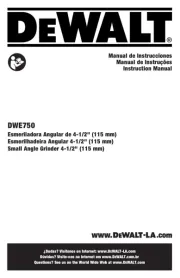
10 Februari 2025

26 Mei 2023

22 Mei 2023

17 Mei 2023

11 Mei 2023

9 Mei 2023

2 Mei 2023

25 April 2023

24 April 2023

23 April 2023
Handleiding Schuurmachine
- Hitachi
- Bavaria By Einhell
- Max
- Metabo
- Biltema
- Kinzo
- NEO Tools
- Graphite
- Varo
- Ferm
- Hazet
- AEG
- Porter-Cable
- Ozito
- Skil
Nieuwste handleidingen voor Schuurmachine
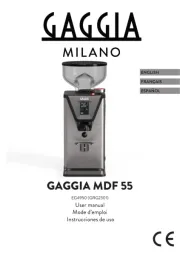
30 Juli 2025
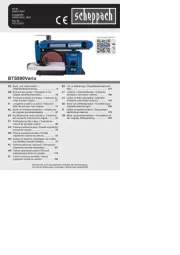
29 Juli 2025
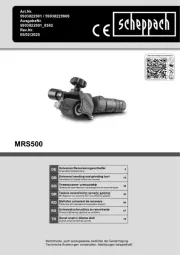
29 Juli 2025
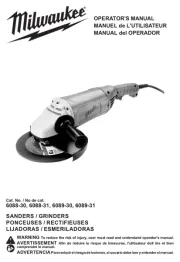
16 Juli 2025
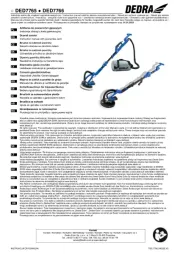
15 Juli 2025
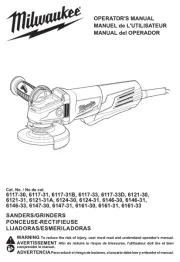
15 Juli 2025
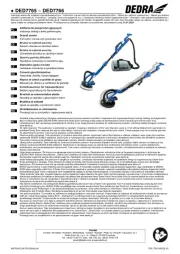
15 Juli 2025
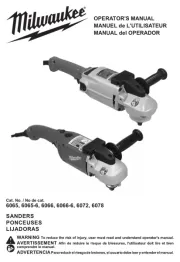
15 Juli 2025
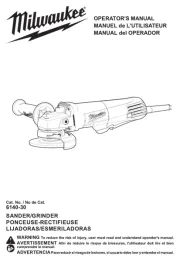
15 Juli 2025
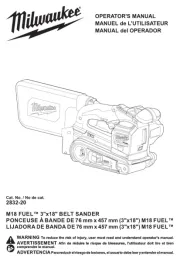
15 Juli 2025